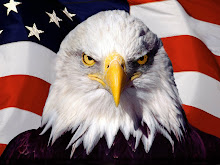On-page SEO is one of the most important components of the search engine optimization process. The best thing about on-page SEO is that it can be 100% controlled by the website owner or webmaster. You decide what elements to put on a page, how to arrange the layout, how to use keywords and what messages to deliver to your audience.
Put your keyword in your permalinks: Set your links to post name. Make sure that your keywords are in the first three to five words of your URL. The easiest way to do it is by putting your keyword at the beginning of your post's title. Put your keyword in the title: A study done by Moz.com showed that web pages that have keywords at the beginning of the title tag rank better than web pages that don't.
Engage your audience: A big factor in ranking high in the search engines is bounce rate, or how much time your visitors spend consuming your content. Having a high bounce rate is bad for your rankings, however, you can remedy this by embedding videos, diagrams and images into your content.
Link to related relevant authority websites: An outbound link helps the search engines to determine exactly what your content is all about. So, if you have a website that sells bicycles, link to a page on Wikipedia about bicycles. Put your keyword in the first 100 words: You should put your keywords in the first 100 to 150 words of your blog post. Putting your keyword early in your content complements the title tag perfectly.
As you can see from above, there are many on-page factors that can affect your rankings in Google. It's important to note that in order to make your ranking stick on Google, you must write content that is at least 800 words. This is really a good sign to show to Google.
Put your keyword in your permalinks: Set your links to post name. Make sure that your keywords are in the first three to five words of your URL. The easiest way to do it is by putting your keyword at the beginning of your post's title. Put your keyword in the title: A study done by Moz.com showed that web pages that have keywords at the beginning of the title tag rank better than web pages that don't.
Engage your audience: A big factor in ranking high in the search engines is bounce rate, or how much time your visitors spend consuming your content. Having a high bounce rate is bad for your rankings, however, you can remedy this by embedding videos, diagrams and images into your content.
Link to related relevant authority websites: An outbound link helps the search engines to determine exactly what your content is all about. So, if you have a website that sells bicycles, link to a page on Wikipedia about bicycles. Put your keyword in the first 100 words: You should put your keywords in the first 100 to 150 words of your blog post. Putting your keyword early in your content complements the title tag perfectly.
As you can see from above, there are many on-page factors that can affect your rankings in Google. It's important to note that in order to make your ranking stick on Google, you must write content that is at least 800 words. This is really a good sign to show to Google.
About the Author:
YouTube.com - Covert Context is a news review site that reveals the truths & myths by providing a Covert Context Review.




Aucun commentaire:
Enregistrer un commentaire